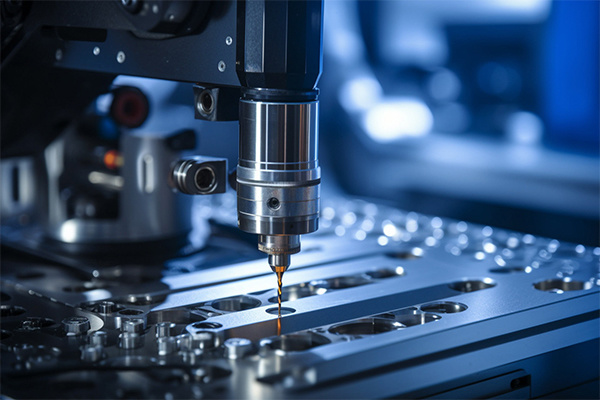Information Details
Calculation of machine tool spindle movement
Release time:
2023-07-04 15:21
As machine tools continue to develop towards high speed, high precision, and high efficiency, the requirements for spindle speed are becoming increasingly high. However, during the design, manufacturing, and assembly processes of the machine tool spindle assembly, it is inevitable that the center of gravity will deviate from the rotation center due to structural, material, and assembly reasons, causing the machine tool to produce vibrations, noise, and bearing heating. The higher the speed, the more severe the vibrations caused by imbalance. Due to the influences of manufacturing processes, assembly quality, individual part quality, and asymmetrical part shapes, the spindle will exhibit a phenomenon where the center of gravity deviates from the spindle center during rotation after overall assembly, known as spindle rotation imbalance. Spindle rotation imbalance can cause the spindle to vibrate, produce noise, and generate heat.
By performing dynamic balance checks on the spindle, it can effectively reduce the vibrations of the spindle and bearings, thereby achieving the goal of lowering spindle temperature rise and improving the service life of spindle bearings. The TK6920 floor-type milling and boring machine spindle uses a Shanghai SCHENCK horizontal dynamic balancing machine for dynamic balance correction, employing the rigid shaft dynamic balancing method, which performs dynamic balancing at a fixed speed. This method ensures that the spindle achieves balance at a certain range of working speeds. According to ISO 1940, different types of rotor dynamic balance precision levels are specified, and precision spindle assemblies can adopt G2.5, G1, and G0.4 levels. The dynamic balance precision level for the example machine tool TK6920 CNC floor-type milling and boring machine spindle is G0.4. The maximum speed of this machine tool is 1,800 r/min, and according to the ISO1940-1973 international standard, its dynamic balance level is calculated using the following formula:
G=eω/1 000 (1)
Where G is the dynamic balance level (mm/s); e is the spindle's eccentricity (mm); ω is the angular velocity (rad/s).
e=G1 000/ω (2)
The relationship between the remaining imbalance U and the spindle mass m.
e=U/m (3)
Where U is the allowable imbalance (g·mm); m is the spindle mass (kg).
According to formula (3), we can obtain.
U=em (4)
The corresponding parameters for the TK6920 CNC floor-type milling and boring machine spindle assembly are: total mass of 1,600 kg, maximum working speed of 1,800 r/min. According to the spindle precision standard, the dynamic balance precision level is selected as G0.4, and the allowable imbalance of the spindle can be calculated using the above formula.
ω = 2 πn / 60 = 2 × 3.14 × 1,800/60 = 188.4 rad/s (5)
Substituting 188.4 (rad/s) into formula (2), we get.
e=0.4×1 000/188.4=2.12 mm.
According to formula (4), we can obtain.
U = 2.12/1 000×1 600×1 000=3 392 g·mm.
Since the spindle dynamic balance needs to be checked at two verification surfaces, the allowable imbalance for each verification surface is 3 392/2=1 696 g·mm.
When performing dynamic balance correction on the spindle, it is necessary to remove a corresponding mass of material from the spindle. However, due to structural limitations, material cannot be removed from the spindle itself, so an external dynamic balancing sleeve can be used for material adjustment. The spindle balancing assembly consists of L001 washers (connecting plates), L002 adjustment washers (dynamic balancing sleeves), L003 adjustment washers (dynamic balancing sleeves), the spindle, milling shaft, spacer, gears, and clamping mechanisms.
Previous Page
Previous Page
2024-08-29
Study of Germany's high-end manufacturing industry
2023-11-02
Germany European Machine Tool Exhibition
2023-11-02
2023 Innovation and Entrepreneurship Competition
2023-10-27








